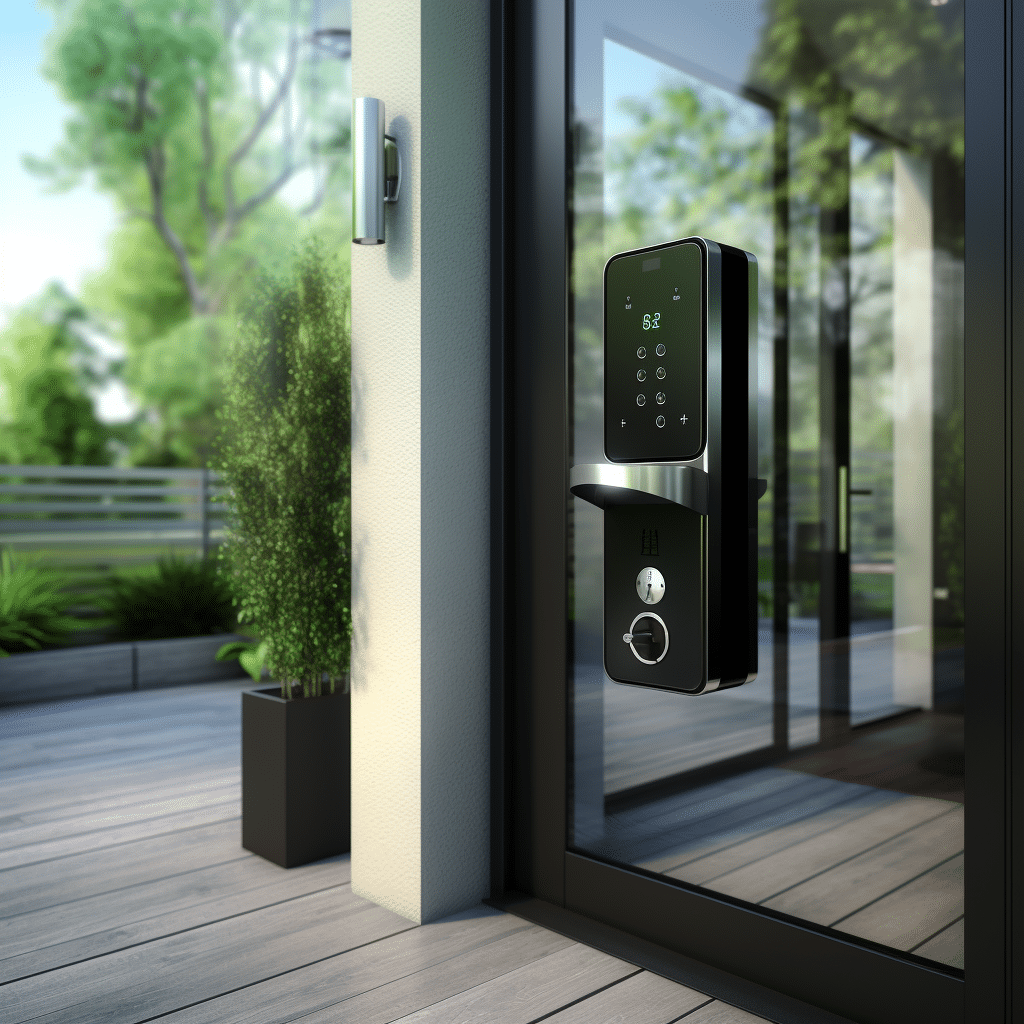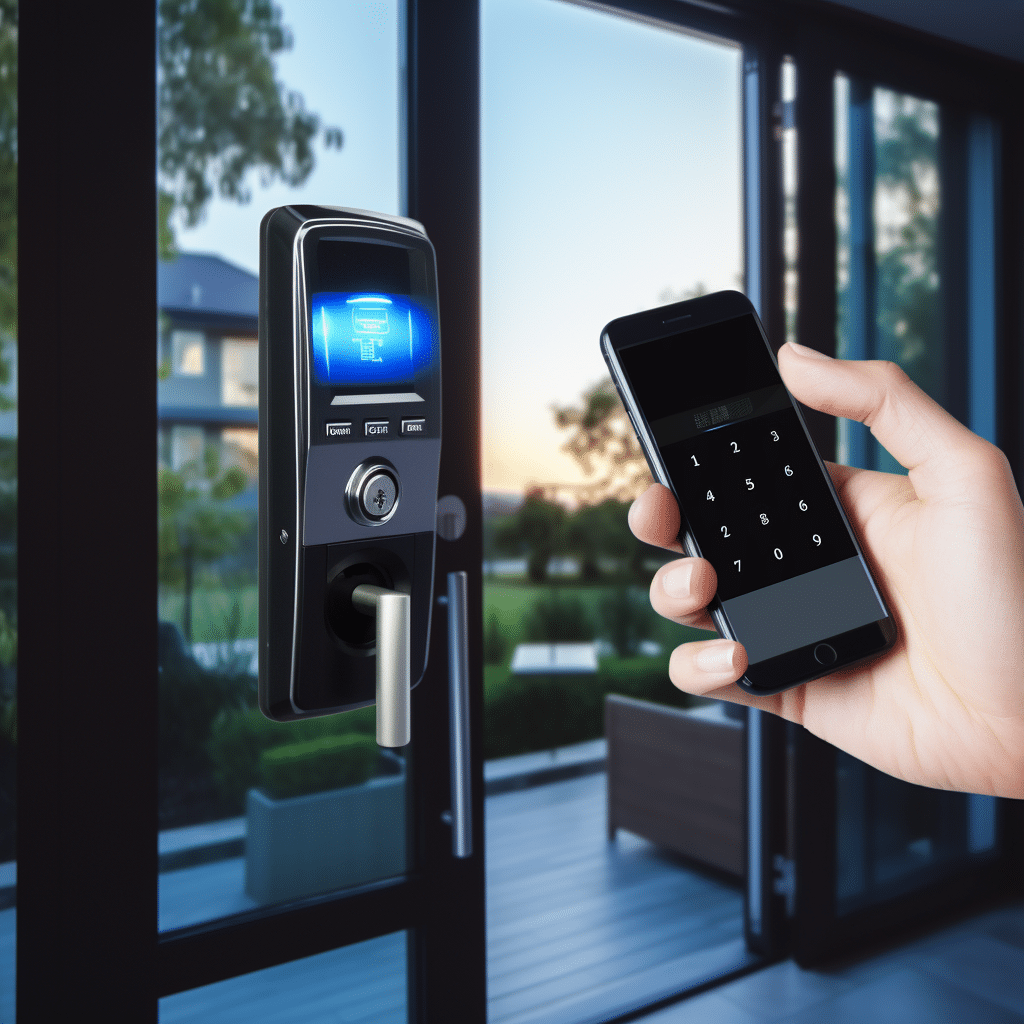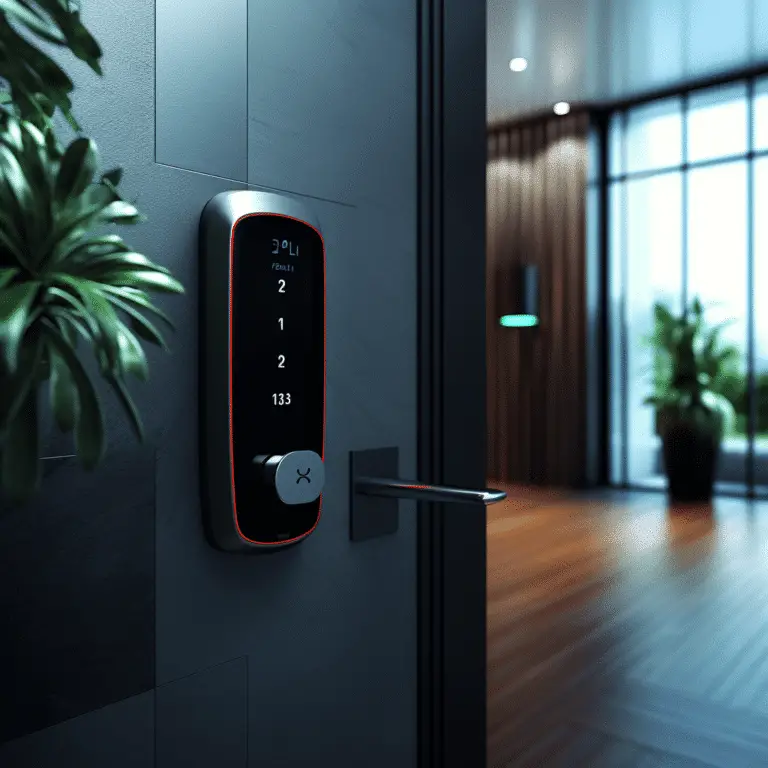Enhancing Home Security with Access Control Integration: I am excited to share with you the possibilities of integrating access control systems with smart home technology. In today’s fast-paced world, homeowners are constantly seeking ways to enhance the security, convenience, and efficiency of their homes. By combining advanced access control systems with smart home devices, such as Schlage LiNK, we can unlock a whole new level of home automation.
Schlage LiNK access control systems use electronic locks and a mobile app for keyless entry and remote monitoring. Homeowners can lock their doors and let guests or service providers in with personalized codes or mobile apps. These systems integrate with smart home devices like thermostats, lights, and security cameras for complete control and automation.
Integrating access control systems into smart homes is convenient. Lock or unlock your doors, adjust the thermostat, and monitor your security cameras from anywhere with a tap on your mobile app. This control simplifies daily living and boosts home security.
Integration of access control systems improves energy efficiency and convenience. You can create personalized schedules and remotely control home energy usage with smart thermostats and lights. This lowers your energy expenditures and carbon footprint.
Integrating access control systems boosts security. With advanced encryption and reliable battery backup, these systems remain functional and secure during power outages. These systems protect you and your family from lost or stolen keys.
When you mix smart home technology with access controls, you have full control over how safe, convenient, and energy efficient your home is. You can make your home smart and safe by changing the settings, locking and opening doors, and keeping an eye on it from afar.

Key Takeaways:
- Integrating access controls systems with smart home technology enhances home security, convenience, and energy efficiency.
- Access control systems like Schlage LiNK offer keyless entry and remote monitoring capabilities through a mobile app.
- These systems seamlessly integrate with other smart home devices, allowing for comprehensive control and automation.
- By using smart lights and thermostats, homeowners can make their own plans and control how much energy they use from afar.
- Integrating access control systems eliminates the risk of lost or stolen keys and provides a higher level of security.
The Benefits of Integrating Access Control Systems
Homeowners can get a lot of benefits from adding entry control systems to their smart homes. Some of these benefits are better home security, monitoring and control from afar, easy installation and setup, more ease and flexibility, lower energy costs, and the ability to make changes.
Enhanced Home Security: Access control systems provide keyless entry and advanced encryption technology, eliminating the risk of lost or stolen keys and enhancing the overall security of your home.
“Integrating access controls systems into a smart home setup offers numerous benefits for homeowners.”
Remote Monitoring and operate: A mobile app or website can remotely monitor and operate your access control systems, providing you peace of mind and the opportunity to monitor your property from anywhere.
Access controls systems link easily with smart home devices like thermostats, lighting, and more for a complete home automation experience.
Convenience and Flexibility: Access control systems let you assign codes, set schedules, and customize notifications to manage home access.
Integrating access controls systems with smart home devices lets you control and optimize energy usage, improving home energy efficiency.
Access control systems are straightforward to install and set up for tech-savvy and non-technical users.
Summary:
A smart home with an access control system is safer, lets you watch and control things from away, works better with home automation, is more convenient and flexible, saves energy, lets you make changes, and is simple to set up and install. The advanced encryption technology lets you get into your home without a key. You can also use these devices to keep an eye on and control your home from away. As long as you have other smart home devices that work with them, you can control the whole house. Entry control systems are also easy to set up, can be changed to fit your needs, and have energy-saving features.
The Different Components of Access Control Systems
There are different parts to an access control system that all work together to make a full home security system. It Schlage LiNK Bridge, smart locks, thermostats, cameras, a gateway, and a keypad are some of these parts.
The Schlage LiNK Bridge
The Schlage LiNK Bridge is the central hub of the access control system. It connects to the home’s Wi-Fi network, allowing for remote control and monitoring of the system. With the Schlage LiNK Bridge, homeowners can easily manage their security devices and access control features from anywhere using a mobile app or website.
Electronic Locks
The electronic locks used in access control systems replace traditional door locks and provide keyless entry. These locks are equipped with advanced security features and can be controlled remotely through the Schlage LiNK system. Homeowners can assign personalized codes or use the mobile app for secure access to their homes.
Thermostats, Cameras, and Gateway
Instead of just electronic locks, the Schlage LiNK system includes heaters, cameras, and a gateway that work with other smart home devices. This integration makes it possible to fully automate your house and make it more convenient. Through the Schlage LiNK system, homeowners can handle other smart devices as well as their thermostats and security cameras.
Keypad
The Schlage LiNK Keypad is an optional component that can be placed near the door for easy and secure access. It provides a physical keypad for entering personalized access codes, eliminating the need to rely solely on the mobile app for entry. The keypad adds an extra layer of convenience and flexibility to the access control system.
| Component | Description |
|---|---|
| Schlage LiNK Bridge | The central hub that connects to the home’s Wi-Fi network and allows for remote control and monitoring. |
| Electronic Locks | Advanced locks that provide keyless entry and can be controlled remotely through the Schlage LiNK system. |
| Thermostats, Cameras, and Gateway | Compatible devices that enable seamless integration with other smart home devices, enhancing home automation. |
| Keypad | An optional physical keypad for secure access without relying solely on the mobile app. |
How to Integrate Access Control Systems in Your Home
Integrating access control systems into your home can greatly enhance your security and convenience. Whether you’re installing a new system or upgrading an existing one, the process is relatively straightforward. Follow these steps to install, set up, and customize your access control system.
1. Install Access Control Systems
Step one is to get the parts you need to protect your house. There may be cameras, electronic locks, a Schlage LiNK Bridge, and an entrance as part of this. Once you have the parts, get the tools you need and follow the manufacturer’s instructions for how to put them together. The Schlage LiNK Bridge needs to be connected to your Wi-Fi network and other devices need to be linked. Electronic locks should be put on your doors. Make sure that the things are securely held in place so that they work best.
2. Setup Access Control Systems
Once the hardware is set up, it’s time to set up and setup your access control system. To connect the devices and change the settings, use the manufacturer’s mobile app or website. Assigning unique codes for keyless entry, setting up plans for access, and connecting to other smart home devices are some of the things that can be done. Spend some time getting to know the features and choices you have access to, and then make changes based on your needs.
3. Customize Access Control Systems
When you’re done setting up your entry control system, use the customization tools to make it fit your needs. Change the settings to get the amount of safety and ease of use you want. You might want to set up personalized entry schedules, alerts, and features that save energy. You can get the most out of your system and make it work best for you and your family by changing it.
4. APIPA Setup
Automatic Private IP Addressing (APIPA) is a feature that makes it possible for all of the parts of your access control system to talk to each other without any problems. Make sure APIPA is turned on so that the devices can choose their own IP addresses within a certain area. This will make sure that all of the devices can talk to each other and work together to make your home security system safe and effective.
| Step | Description |
|---|---|
| 1 | Install access control system components, following manufacturer’s instructions. |
| 2 | Set up and configure the system using the manufacturer’s mobile app or website. |
| 3 | Customize the system settings to match your security and convenience preferences. |
| 4 | Enable APIPA for seamless communication between system components. |

Conclusion
Homeowners can get a lot of benefits from combining entry control systems with smart home technology. With keyless entry and advanced encryption technology, these systems make homes safer because keys can’t be lost or stolen. With remote tracking and control, homeowners can use a website or mobile app to keep an eye on their security systems from anywhere, giving them peace of mind.
Seamless integration with other smart home devices allows for comprehensive home automation, enabling homeowners to control thermostats, lights, and more from a centralized hub. This integration not only enhances convenience but also promotes energy efficiency by allowing for personalized schedules and remote control of devices, ultimately reducing energy consumption.
Combining access control systems lets you customize them. Giving each person a unique code, configuring access schedules, and adjusting notification methods lets homeowners customize the system. Since these systems are straightforward to install and set up, both techies and non-techies can utilize them.
Setting up access control systems involves installing parts, adjusting settings, and testing communication using Automatic Private IP Addressing (APIPA). These steps make adding access control systems to smart homes easy. This will provide them additional home automation and security control.
FAQ
Can I control my access control system remotely?
Yes, integrating access control systems with smart home technology allows you to remotely control and monitor your security devices using a mobile app or website.
How does integrating access control systems enhance home security?
By providing keyless entry and advanced encryption technology, access control systems eliminate the risk of lost or stolen keys, enhancing the security of your home.
Can access control systems integrate with other smart home devices?
Yes, these systems seamlessly integrate with other smart home devices such as thermostats, lights, and security cameras, allowing for comprehensive home automation.
Is the installation and setup process for access control systems complicated?
No, installing and setting up access control systems is a straightforward process. Simply follow the manufacturer’s instructions and customize the settings according to your preferences.
How does Automatic Private IP Addressing (APIPA) affect access control systems?
APIPA ensures that your access control system devices can communicate effectively by allowing devices to assign themselves IP addresses within a specific range.

